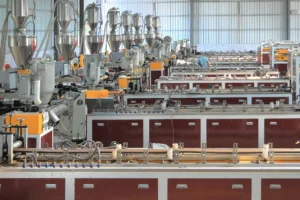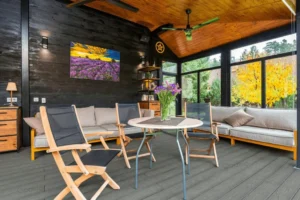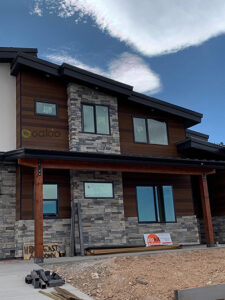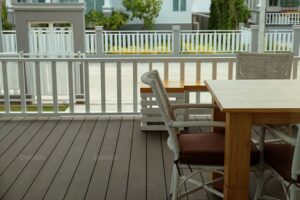Exploring the Use of Coffee Husks in Wood-Plastic Composites (WPC)
Coffee is a global industry, producing over 2 billion tons of byproducts annually. Traditionally regarded as waste, coffee husks and grounds are gaining attention as valuable raw materials for sustainable applications. Among these, the integration of coffee husks into wood-plastic composites (WPC) offers significant potential, creating eco-friendly, high-value products while reducing environmental impact.

1. Coffee Husk Fiberboards
The high cellulose and hemicellulose content in coffee husks make them ideal for engineered fiberboards. Similar to other agricultural residues like rice husks and peanut shells, coffee husks have proven to be a viable material for particleboard production.
Key Benefits:
- Superior Fiber Properties: Coffee husks contain high-quality fibers suitable for particleboard manufacturing.
- Eco-Friendly Aromatic Panels: By combining coffee husks with adhesives infused with jasmine or sandalwood scents, researchers have created aromatic boards that provide a natural fragrance. These value-added products appeal to consumers seeking functional and aesthetic benefits.
- Increased Product Value: Leveraging the natural coffee aroma and bio-based composition, coffee husk fiberboards offer sensory appeal and enhanced market potential.
Production Considerations:
- Adhesives and Additives: Isocyanate and urea-formaldehyde adhesives improve the structural integrity of fiberboards.
- Mineral Content: Coffee husks contain trace minerals and organic compounds that may influence production processes and material properties.
2. Coffee Husk WPC
Wood-plastic composites (WPC) combine lignocellulosic materials with thermoplastics to create versatile, durable products. Using coffee husks as a replacement for traditional wood fibers introduces new opportunities in sustainable manufacturing.
Challenges in Coffee Husk WPC:
- Material Compatibility: Coffee husks differ from standard wood fibers due to their unique composition, which includes proteins and sugars. High temperatures during processing can cause these substances to decompose, affecting product quality.
- Improving Bonding: The inherent polarity difference between wood fibers and plastics necessitates the use of coupling agents to enhance compatibility.
Advantages of Coffee Husk WPC:
- Environmental Benefits: Reusing coffee husks reduces agricultural waste while creating durable, low-maintenance products.
- Aesthetic Appeal: Coffee husks can enhance the texture and appearance of WPC deck, offering natural wood-like patterns with added visual depth.
- Applications: Common uses include decking, fencing, and cladding, which benefit from the water resistance and longevity of WPC materials.
3. Coffee Husk in 3D Printing Materials
3D printing, or additive manufacturing, is an emerging field that leverages innovative materials for customized, eco-friendly designs. Coffee husks are being explored as a bio-based filler for 3D printing composites.
Potential Benefits:
- Renewable Resource Utilization: Coffee husks provide a sustainable alternative to conventional 3D printing materials, reducing reliance on petroleum-based plastics.
- Material Properties: Blending coffee husks with biodegradable plastics such as PLA (polylactic acid) can create strong, lightweight, and environmentally friendly filaments.
Applications:
- Custom Furniture: Eco-conscious consumers can benefit from furniture created using coffee husk-based 3D printing materials.
- Decorative Items: Coffee husk composites lend themselves to producing aesthetically pleasing, sustainable home décor.

Future Outlook for Coffee Husk Applications
As sustainability takes center stage in materials science, coffee husks represent a promising avenue for innovation. Their use in WPC, fiberboards, and 3D printing aligns with global efforts to reduce waste and develop renewable resources. With advancements in processing technologies, coffee husks could become a staple in the production of eco-friendly composites.
Key Trends to Watch:
- Improved Material Processing: Research into thermal stability and compatibility will enhance the performance of coffee husk composites.
- Market Expansion: The demand for bio-based and low-carbon materials will drive broader adoption across industries.
- Consumer Awareness: Increasing awareness of sustainable products will create new opportunities for coffee husk-based solutions.
Conclusion
The application of coffee husks in composite materials such as WPC panel, fiberboards, and 3D printing represents a significant step towards sustainable manufacturing. By transforming agricultural waste into high-value products, these innovations reduce environmental impact while delivering practical and aesthetic benefits. Embrace the future of sustainable materials by exploring the potential of coffee husks in eco-friendly product design.
Trending Reading
What Are the Differences Between the WPC Board and PVC Board?
[2024 Update] How Long Does WPC Decking Last?











